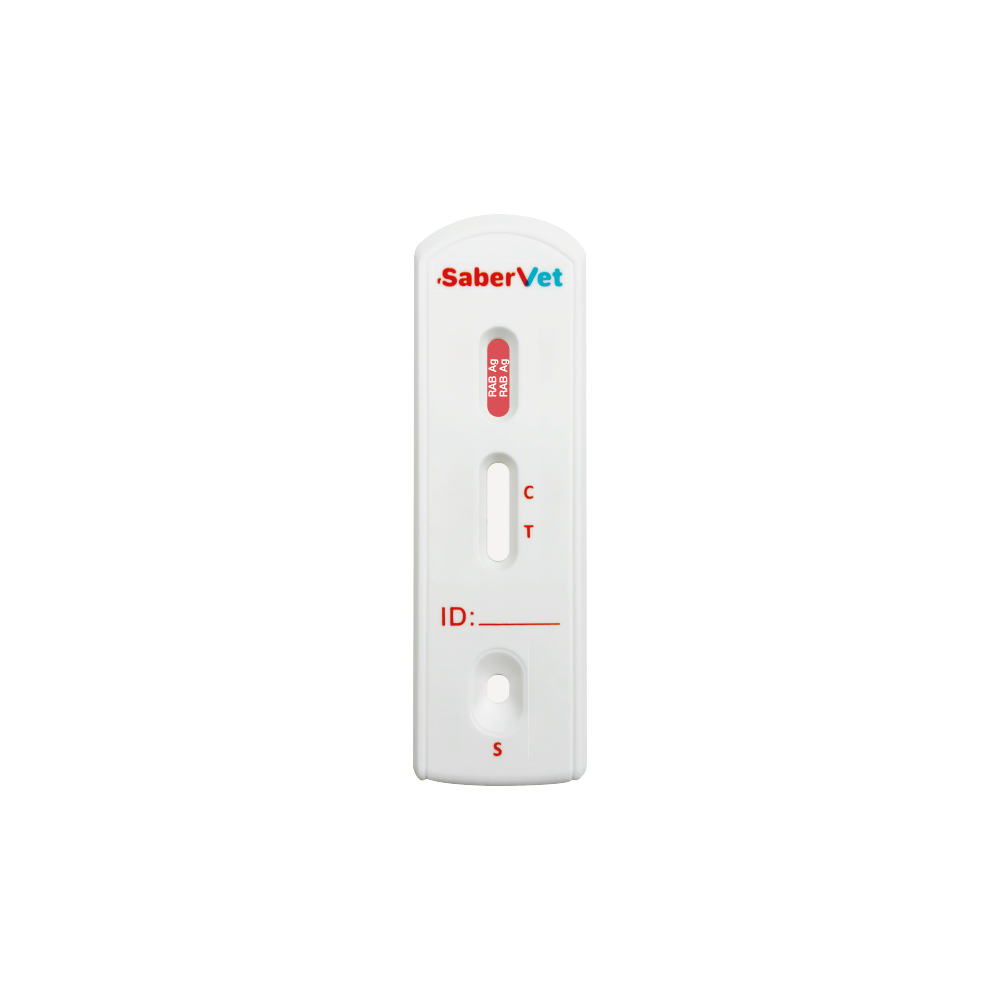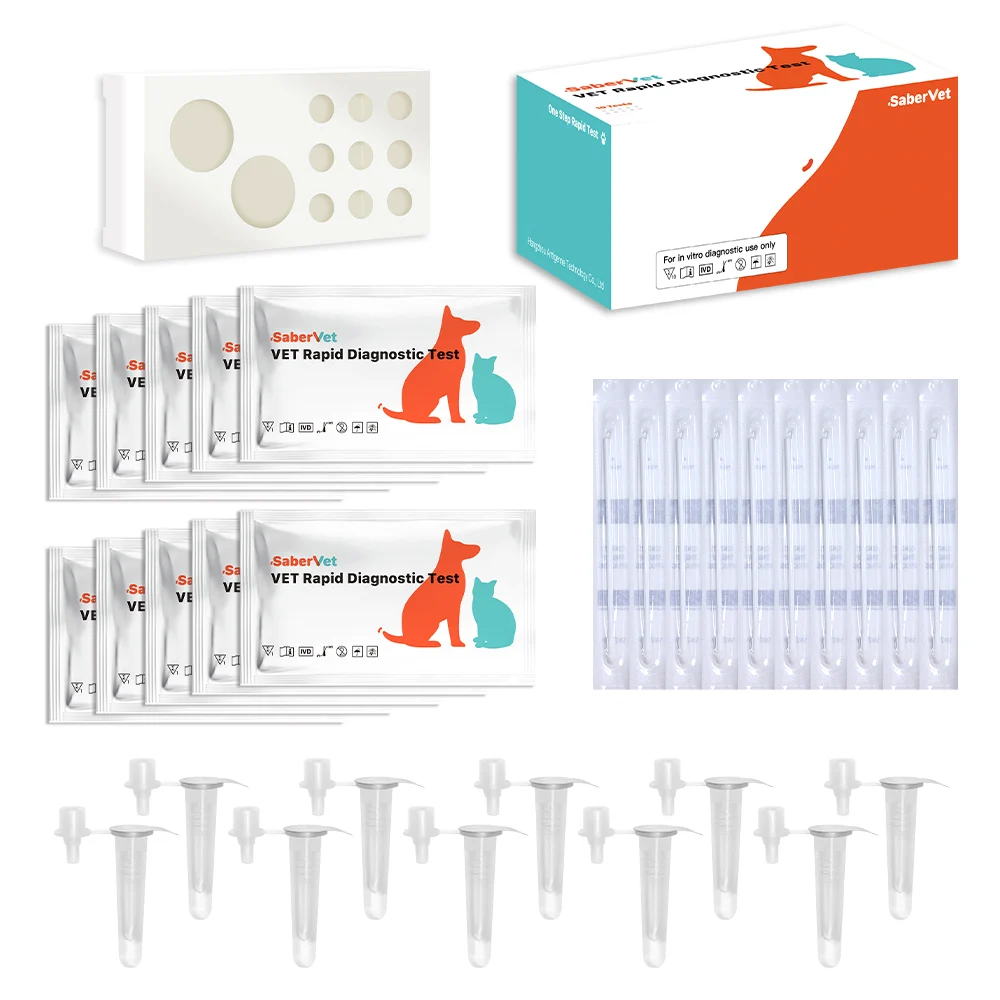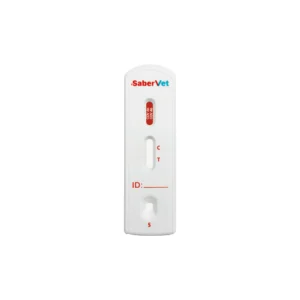Description
Contents
| Component | 10T/Box |
| Test device | 10 piece |
| Swab | 10 piece |
| Buffer | 10 piece |
Specifications
| Product name | SaberVet Rabies Antigen Rapid Test |
| Brand Name | Sabervet |
| Model Number | 1091182410 |
| Specimen | Secretions |
| Application | Vet Health Diagnosis |
| Sensitivity | 99.80% |
| Specificity | 97.69% |
| Certificate | GMP & ISO9001 & CE |
| Assay Time | 10 Minutes |
| OEM&ODM | Available |
| Shelf Life | 3 Years |
Operation
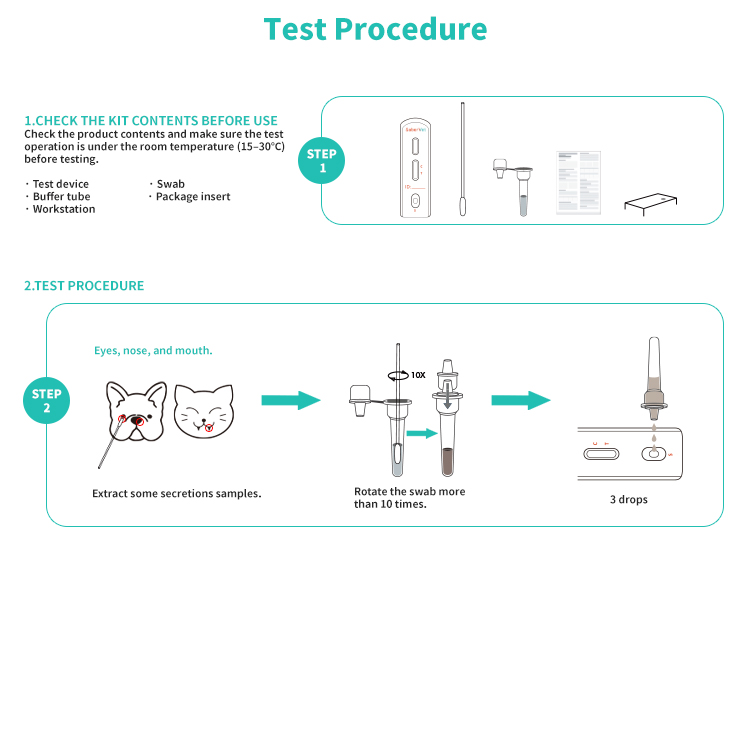
Results
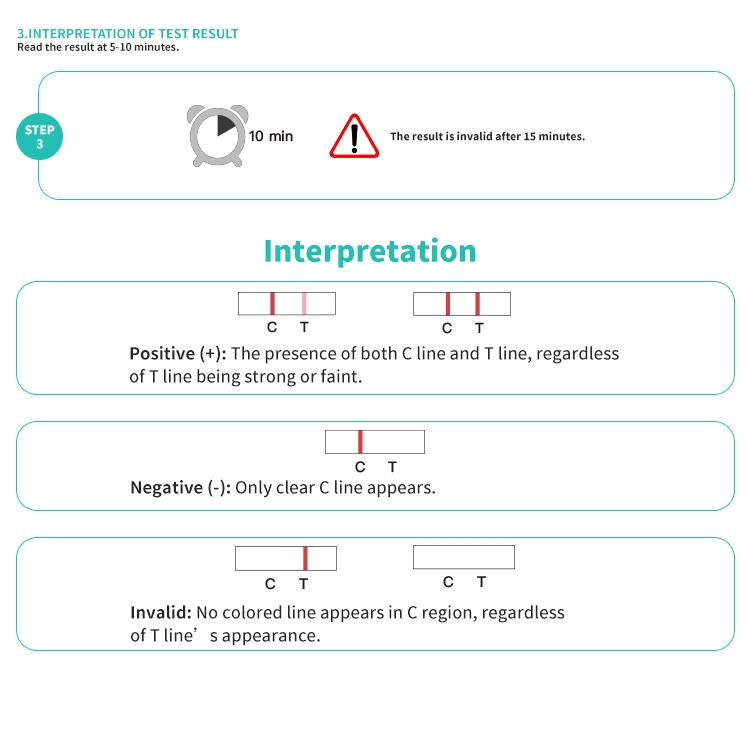
Rabies virus belongs to the family of elastoviridae, the genus Rabies virus. The virus particles are elastic in shape, with a diameter of about 75 nm, and are encapsulated in a capsule as an RNA virus. Rabies virus infection will cause rabies.
Clinical symptoms of rabies
Rabies, also known as hydrophobia, is a virulent zoonosis caused by the rabies virus, which has a wide range of infections, humans and various warm-blooded mammals are susceptible to infection. If clinical neurological signs are present, death occurs in almost 100% of cases.
Dogs with rabies disease will show a more specific expression of terror and squinting, especially when attacked again by external stimuli. In the late stage of rabies, the patient's consciousness gradually disappears, the body will gradually lose weight, will show fear of water, dyspnoea, jaw droop and other characteristics, and there is a wild biting behaviour, and finally will be due to respiratory distress leading to central failure or paralysis and death.
People suffering from rabies will initially show mania, fear of water, excessive sweating, tearfulness, rapid pulse rate, fever, dilated pupils and respiratory difficulties and loss of self-control, etc., and later will be due to central nervous failure or paralysis coma or death.
Transmission of Rabies
Traumatic contact transmission
If scratched or bitten by rabid animals or suspected rabid animals, or contacted with rabies virus-carrying animals and their saliva or blood in the broken skin or mucous membrane, rabies virus can enter into the body through the broken place, and the traumatic contact transmission is the more common way of transmission.
Respiratory transmission
Aerosols of rabies virus may be found in the burrows of rabies virus-carrying animals. If inhaled after entering a burrow, rabies virus can be transmitted through the respiratory tract.
Digestive tract transmission: Consumption of rabies-infected food, such as meat and its products from diseased animals, may also lead to transmission of rabies.
Clinical diagnosis of Rabies
Virus isolation and culture: Fresh brain tissue is collected from diseased animals after death, and the tissue fluid is injected into suckling mice or inoculated with cellular tissue for culture and amplification, and the virus particles are detected using immunofluorescence technology. This method is suitable for confirming the diagnosis of dead animals suspected of being infected.
Fluorescent Antibody Technique: Fluorescent Antibody Technique (FAT) refers to the use of fluorescent antibody staining of brain tissue slices fixed in acetone fixative to determine the presence of viral particles or viral inclusions in brain tissue slices by fluorescence microscopy.
Direct Fluorescent Antibody
Direct Fluorescent Antibody (DFA) is the "gold standard" for laboratory diagnosis of rabies and is accredited by the World Organisation for Animal Health (OIE). The method involves fixing brain tissue slices from suspected diseased animals and binding them with fluorescein isothiocyanate (FITC)-labelled monoclonal antibodies to the rabies virus, which can be directly observed by fluorescence microscopy to determine the viral particles.
Rapid immunohistochemistry
Rapid immunohistochemistry (dRIT) is mainly used for the qualitative detection of rabies. The method mainly collects brain tissue samples from suspected diseased animals, and after specific binding with specific rabies virus monoclonal antibody, after staining, the presence of virus particles can be directly observed under the light microscope to determine whether rabies is infected or not.
Enzyme-linked immunosorbent assay
Enzyme-linked immunosorbent assay (ELISA) makes use of the principle of specific binding of antigen and antibody to determine the negativity and positivity of the pathogen by observing the degree of colour reaction.
Nucleic acid detection technology
Nucleic acid detection of rabies virus usually adopts RT-PCR technology to amplify the target gene fragment, and judgement is made according to the amplification results.
Rabies Antibody Rapid Test
Antigenne has developed a Rabies Antibody Rapid Test for saliva/cerebrospinal fluid samples, which can be used as an effective means for users to monitor the rabies virus.
